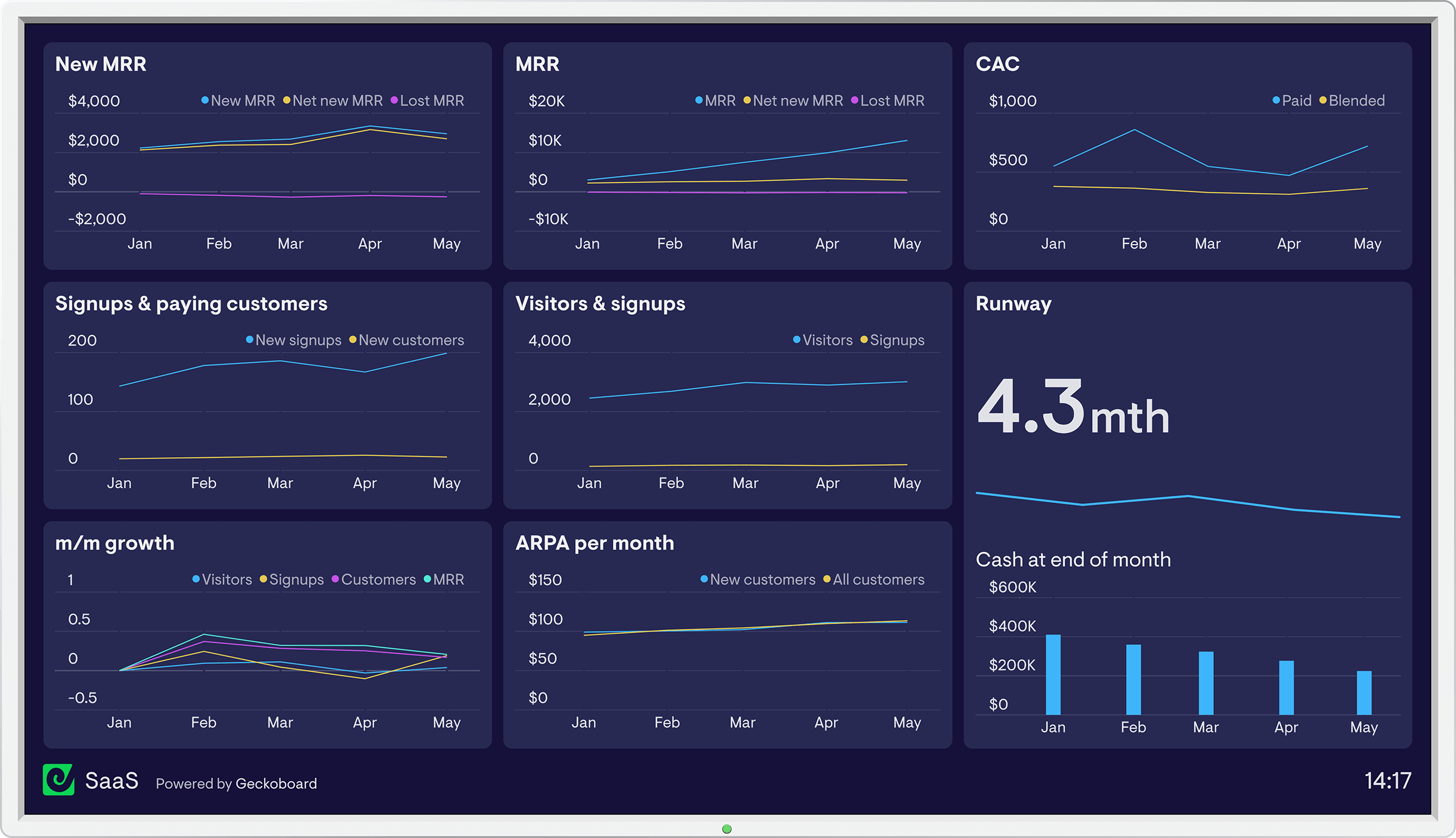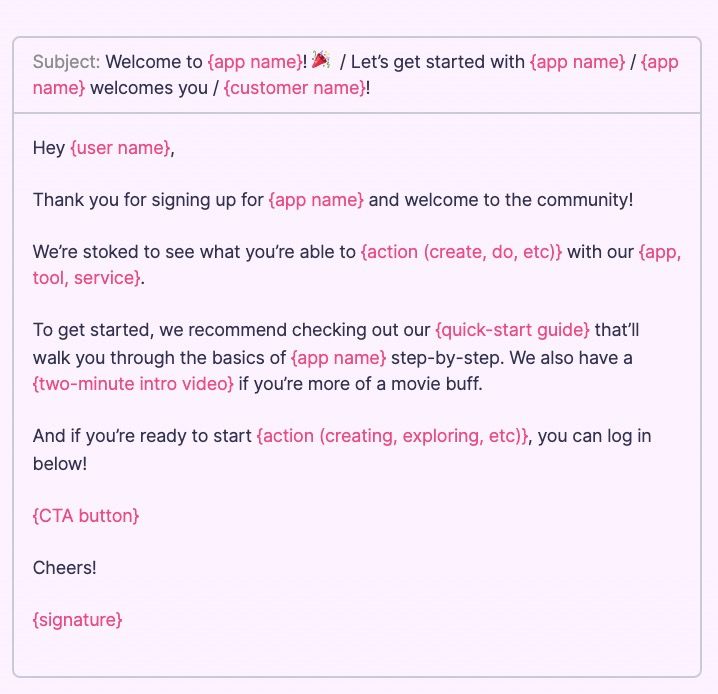If there is one word that growing SaaS companies loathe the most, it is probably churn.
Churn of any kind can be worrisome, but revenue churn, in particular, can kill a business if neglected. Revenue churn is a measure of how much money your company loses during a given period of time, typically per month.
Fortunately, revenue churn can be reduced with the right knowledge and strategy. This article covers how revenue churn is calculated, how it differs from customer churn, and proven ways to reduce it (and keep your business growing!).
How to calculate revenue churn
For businesses with a recurring revenue mode, calculating revenue churn is fairly straightforward. You just need to know your monthly recurring revenue (MRR).
Here’s the formula:
(MRR lost to downgrades and cancellations in the last 30 days ÷ MRR 30 days ago) x 100
Net revenue churn
If your business offers different pricing tiers or add-on options, this means you earn expansion MRR when your customers upgrade their accounts. Notice that the simple revenue churn formula doesn’t include expansion MRR. To accurately capture how expansion MRR impacts your churn numbers, you can calculate net revenue churn instead.
It’s only slightly different from the above formula:
[(churned MRR − expansion MRR) ÷ starting MRR 30 days ago] x 100
Net negative revenue churn
Net negative revenue churn is when your expansion MRR is greater than the MRR you lose from downgrades and cancellations. Let me illustrate this with an example.
Let’s say Dunder Mifflin started the month with $5,000 in MRR. It lost $100 in MRR from cancelled customers and downgrades but gained $500 MRR in expansion MRR.
The net negative revenue churn is calculated using the same formula as that for net revenue churn:
(100 − 500) ÷ 5,000 = −8%
As you might expect, net negative revenue churn is rare, and when achieved, it is difficult to maintain month after month. It’s a great goal to work toward, though.
Revenue churn vs. customer churn
There are two types of churn: revenue churn and customer churn.
Simply put, revenue churn refers to the amount of revenue you’ve lost, whereas customer churn refers to the number of customers you’ve lost.
Most companies track both types of churn because they provide different data points on your business. However, revenue churn tells you more about the financial impact on your business.
For instance, there’s a huge difference between losing a customer who pays you $50 per month and losing a customer who pays you $500 per month.
If you were to look only at customer churn, the rate would be the same and wouldn’t, therefore, reflect this difference. Revenue churn, on the other hand, would increase in this situation, giving you a more accurate representation of the impact on your business.
What’s a good revenue churn rate?
There is no cut-and-dried answer here. It depends on several factors, including your industry, the size of your company, and your pricing model.
Generally speaking, however, lower is always better. For a SaaS company that targets small businesses, a monthly rate of 3–5% typically means you’re on the right path to sustainable growth.
If you run a SaaS company, you can compare your revenue churn rate to companies with similar average revenue per user (ARPU) using benchmarks in Baremetrics.
Comparing your numbers with benchmarks is one way of telling whether your numbers are headed in the right direction. If reducing revenue churn is a priority for your team, keep reading for our best tips.
Three ways to reduce revenue churn
In other words, how can you better retain customers?
Reducing churn is no easy task, and many businesses struggle with it. That said, there are immediate actions you can take to position your business for long-term success.
1. Make your revenue churn visible to all team members
Reducing revenue churn is a team effort. From sales to customer success to product, everybody has a role to play in improving customer experience and satisfaction.
One way to keep team members aligned on progress is to make your data and metrics visible via a KPI dashboard. By making your most important KPIs easily accessible, you can ensure that teams stay focused on the same goals and that they can use the data to inform everyday decisions.
Check out this dashboard created by Geckoboard. Notice how it gathers KPIs from different sources in one place, making it easy for the user to see progress at a glance.

2. Onboard customers effectively
The customer journey doesn’t end after someone types in their payment information. It’s crucial to engage new customers immediately and provide them with the knowledge they need to get value from your product or service.
That’s where onboarding emails come in.
When effectively composed, onboarding emails can:
- Engage and delight your customers from their first day as your customer.
- Increase customer lifetime value.
- Proactively address questions about your product, which reduces the need for resources, such as customer success management, in the future.
Not sure what to include in these emails? These nine onboarding email templates are a great place to start. Check out this template for a standout welcome email, which should ideally be sent within a few hours of a customer signing up.
The key components of this email include a personalized greeting, information on helpful resources, and a clear call to action. The copy is concise but friendly.
A similar approach should be adopted for other onboarding emails, but your welcome email is probably the most important. On average, welcome emails have an open rate of over 60%.

The key components of this email include a personalized greeting, helpful resources, and a clear call to action. The copy is concise but friendly.
Other onboarding emails should take a similar approach, but your welcome email is probably the most important. On average, welcome emails see an open rate of over 60%.
3. Use a dunning management system to prevent failed charges
I have some bad news.
Even if you use an awesome KPI dashboard and create a solid onboarding email sequence, your business is still at risk of revenue churn. Why?
Failed charges (another thing SaaS companies hate!)
Failed charges, though usually involuntary, directly impact your revenue churn rate. They happen for three main reasons:
- Insufficient funds
- Expired credit cards
- Incorrect payment information
Traditionally, keeping an eye on failed payments and reaching out to customers falls within an accounts receivable role. Not surprisingly, doing this manually is super inefficient.
That’s why growing companies use dunning management systems to prevent failed charges from happening in the first place. When a customer’s payment fails, a dunning management system automates the outreach process, significantly increasing the chances that the customer will take action.
By adopting this proactive approach, you can prevent service disruptions and provide a better customer experience.
Grow your business by improving revenue churn
Revenue churn is a crucial metric for businesses with recurring revenue. Think of your business as a bucket filled with water. If there’s a leak in the bucket, there will always be some water slipping away, no matter how much more you put in. You need to address the leak.
The strategies shared here can all be implemented right away. You can track real-time changes in revenue churn using Baremetrics and broadcast them next to your other important other data points in Geckoboard.
And the sooner you get started, the sooner you can retain more of your hard-earned revenue.
Lea LeBlanc is a content marketer at Baremetrics and producer of the Founder Chats podcast. She's passionate about impactful businesses and the stories founders have to tell. When Lea’s not writing about the SaaS industry, you can find her trying new recipes in her tiny Tokyo kitchen.

